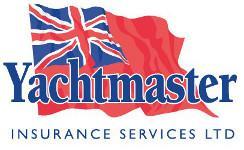It has recently come to my attention that yet more vessels could potentially be in trouble due to failure of through hull fittings and valves made of brass rather than bronze or DZR. Not all insurance policy wordings are very clear when it comes to this type of loss; those that are clear usually specifically decline such losses with wordings along the lines of “excluding gradual incursion of water”.
Other policies rely on statements such as the vessel has to be kept in a “seaworthy condition” or “cover will exclude losses caused by wear and tear”. Whereas we would agree that similar wordings are appropriate in many circumstances, as a poorly maintained vessel is going to be more prone to losses than a well maintained vessel, the owner then becomes reliant upon the interpretation by the particular underwriter in the circumstances of that specific loss.
It is important to inspect through hull fittings and valves on a regular basis. If the fitting shows verdigris, as many will, it is vital to check whether this is just on the surface or whether it has reached the extent of destroying the ability of the fitting to resist water ingress. However, if the interior of the fitting is deteriorating this may not be visible from inside the vessel so a careful check of the inside of the fittings should also be made while the vessel is out of the water.
Many policies have a clause covering “latent defect”, which is basically a defect that cannot be discovered by a reasonably detailed inspection of the item in question. I consider that if an owner can evidence that all through hull valves have been properly inspected but despite this a loss occurs due to internal deterioration of a fitting which he could not detect then the policy should meet the loss.
The real problem here seems to be that the Recreational Craft Directive has permitted boat builders to fit through hull valves that have a life of not less than 5 years. Brass valves, which are cheaper, usually, but not always, achieve this, but often will not last much longer. Many owners do not realise this and expect their “new” vessel to be safe for a lot longer, as they would be if fitted with DZR or bronze valves.
The best solution seems to be to check your through hull fittings regularly and then when they appear to need replacing ensure that you buy and fit the more expensive good quality either bronze or DZR ones for on or below the waterline use and then the chance of a failure is greatly reduced.
David Long - 3/4/2013.
Return to Media Publications & Advice.

